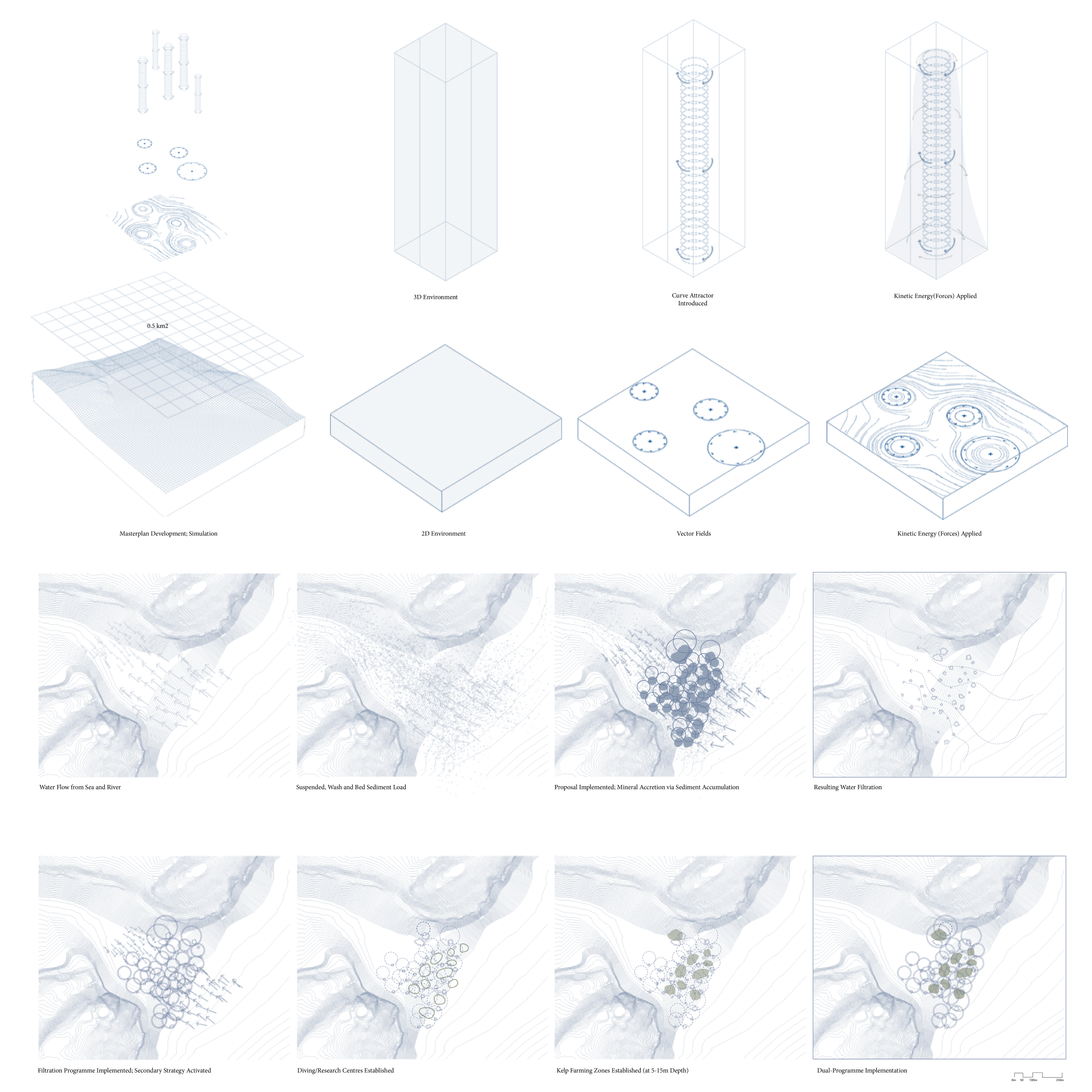Maritsa Raveneau-Joseph
Year 1 MArch
The Poroliths
Porous Marine Filtration Towers
Munlochy Bay, Scotland, UK
The Poroliths are a marine filtration architecture proposal that counters growing environmental instability due to excess sediment load, distribution and transport. The project is deployed within the intertidal flats and subtidal zones of Munlochy Bay; a site shaped by strong tidal currents, suspended sediment carrying pollutants and shifting seabed ecologies.
Inspired by the porous morphology of sea sponges, the Poroliths are designed to passively filter the surrounding marine environment. Sediment loads carried by currents in and around the Bay are captured within the Poroliths’ porous frames. Over time, mineral-rich particles harden through natural accretion processes, turning each structure into a unique, stabilizing limestone-like mass; creating an architecture that is grown rather than built. This gradual thickening not only clears the water column but also reduces sediment and pollutant resuspension, anchoring the seabed and enhancing conditions for marine life.
The towers are positioned along the tidal gradient to maximize sediment interception and respond to site-specific current patterns. In areas with stronger flow, towers are spaced to direct sediment capture. In calmer basins, clusters act as sediment traps, aiding in the regeneration of the ecology of degraded seafloor zones.
Beyond their ecological performance, the Poroliths support a broader marine programme. Floating walkways tethered to the towers allow access for kelp farming, marine research and visitor exploration. As the structures grow distortedly and filter, adapt and emerge through time as a derivative of kinetic energy within the Bay, they become hybrid artefacts: part biological machine, part civic infrastructure, part living reef.










︎︎︎ Home
︎︎︎ Previous // Next ︎︎︎